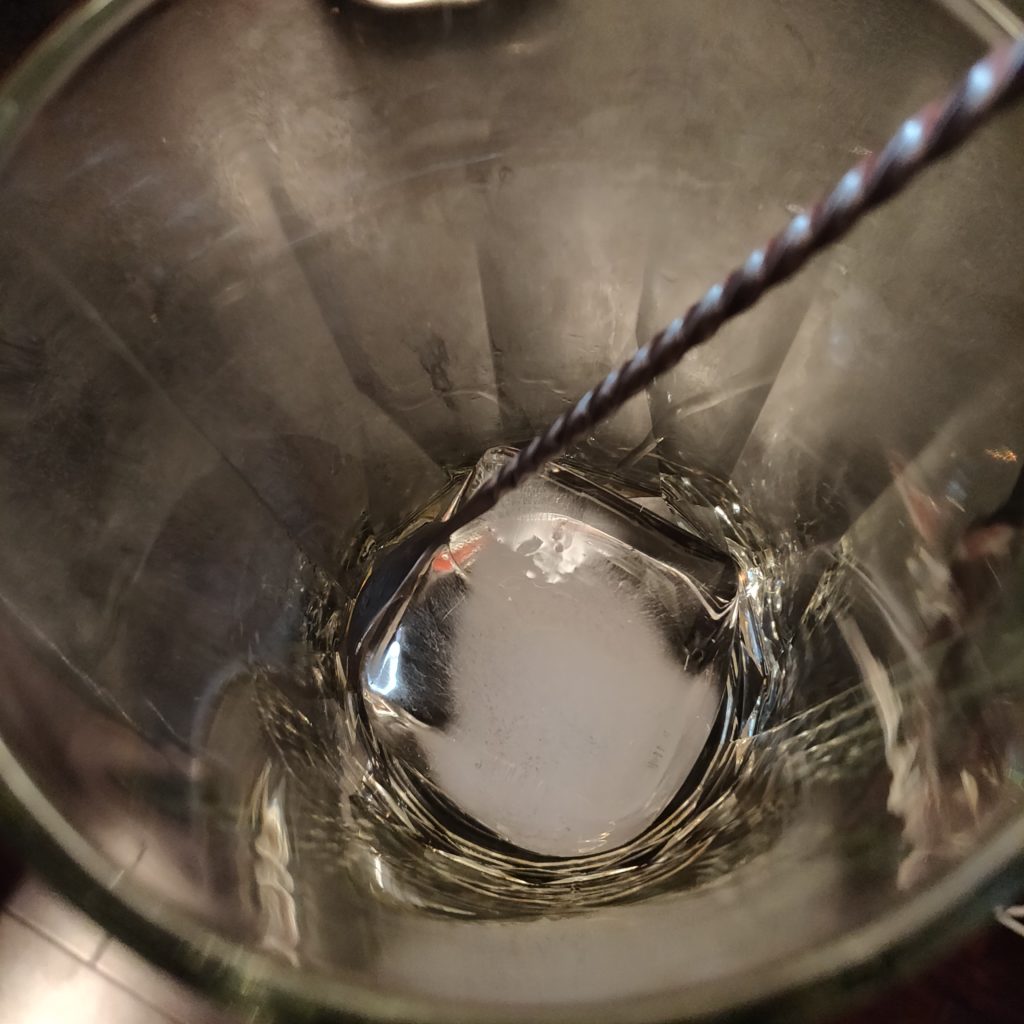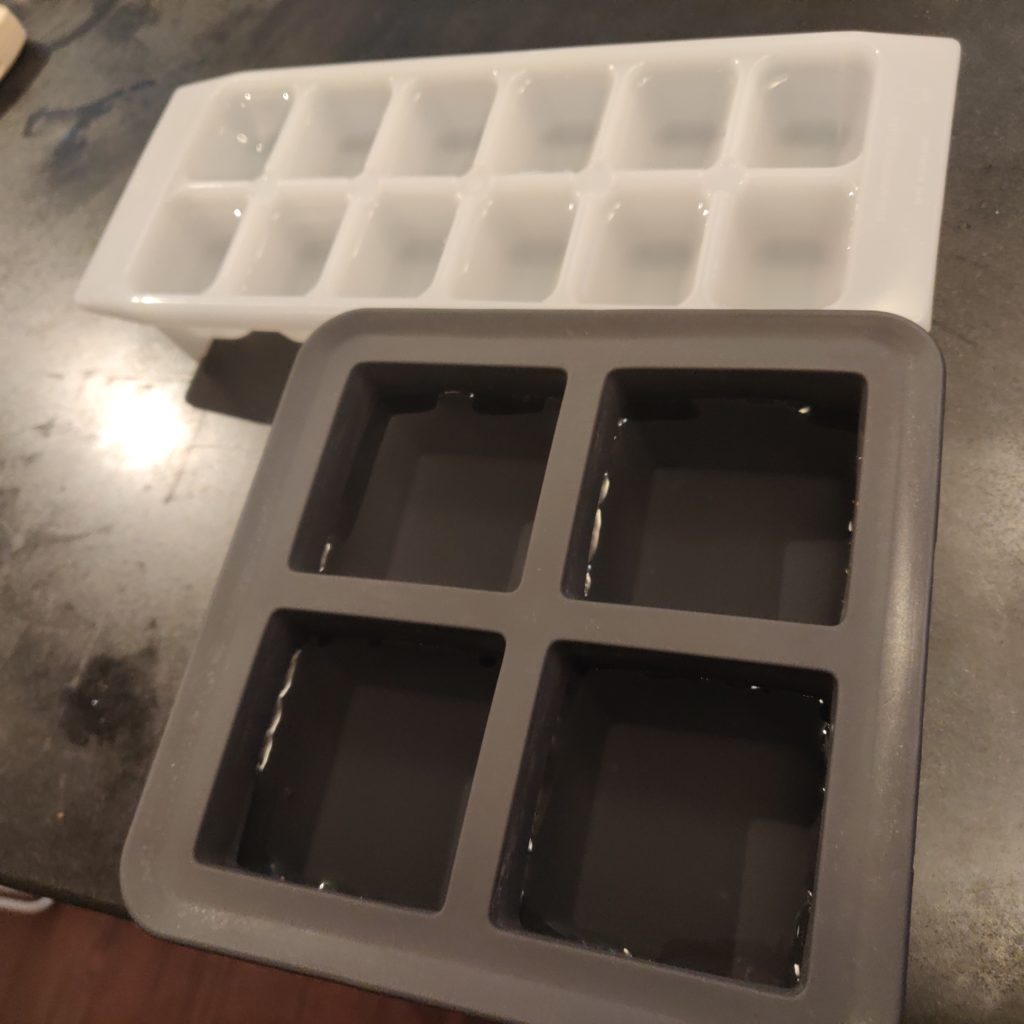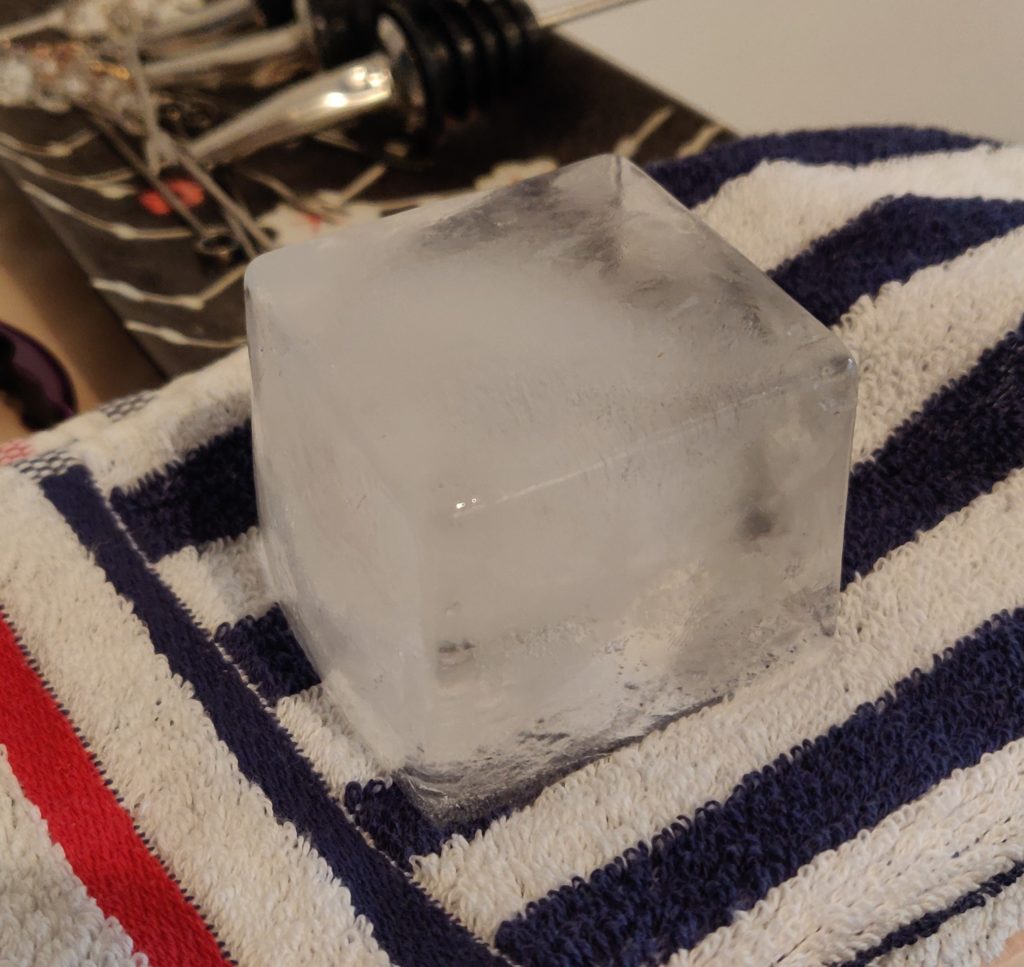Alright stop. Collaborate and listen. **clears throat** Sorry about that.
Where does one even begin in talking about ice (aside from quoting earworm lyrics)? Ice plays such a huge role in how your drinks are made and how they taste. In modern cocktails, it often plays the role of “water” in the classic 1806 definition of a cocktail (“spirit, sugar, water, bitters”). So, in order to get your cocktails right, you need to make sure your ice game is solid.

There are two key purposes of ice in your cocktail: to chill your drink, and to add water. Whether your shaking, stirring, or building a drink on the rocks, it’s important that these two functions are performed well by the ice that you are using.
Many of my favorite high-end bars spend an inordinate amount of money on perfect ice. It’s completely transparent with no trapped gases or other impurities. It’s easy to cut cleanly to the exact right size that you need. And it looks so beautiful in the glass surround by your drink of choice. But how does one achieve such perfection at home?
At the risk of being shunned from cocktail dorkdom, I don’t think it’s all that important to achieve that level of perfection at home. It can be done, but it requires so much time and effort, and probably taking over the entire freezer for the process (or getting a dedicated freezer just for ice).
I’m a big believer in the Pareto principle. In this case, you can get to 80% ice perfection for about 20% of the effort. It may not be crystal clear, but if we focus only on the two most important purposes of ice and less so on the cosmetics, you’ll get what you need for your home bar ice without a huge headache. There are just a few key tips in the making and the using of ice to really get a solid home bar ice game going.
Making Ice At Home
Step 1. Make some ice. Here are a few tricks to getting some good ice at home.
Boil the water first. Boil the water that you’re going to use for your ice. And then of course let it cool back down before pouring it in your plastic or silicone ice trays for freezing. The boiling release trapped gasses and other impurities in the water. These are the things that make your ice cloudy (along with trapped air). This by itself won’t make your ice crystal clear, but it will make for clearer ice. This also means that the ice is less likely to crack or shatter when you go to use it later.

Ice trays and ice size. I like have two different sizes of cubes handy. I keep a couple of classic ice cube trays handy to make what is often considered “normal” sized ice. I like having these cubes for shaken cocktails. I also love having the silicone oversized cube trays. Those larger cubes I find to be excellent for stirred drinks and drinks on the rocks. Ice trays are pretty cheap, so you can have some fun experimenting and find what size ice works for you.
Time to freeze. Alright, the water’s been boiled and cooled back down, and poured into the ice trays (btw, leave a little bit of room at the top of your trays — water expands while freezing). Time to pile them up in the freezer, right? A couple of notes of caution for how you go about doing this. If you have a bunch of trays, don’t stack them on top of each other. Instead put them side by side. The ice freezes from the outside in. Having the trays stacked on top of each other can dramatically affect how that freezing process occurs and can create ice that shears or breaks more easily (we don’t want that). Even better is if you have a special drawer or shelf that you can use just for ice. You can lay out all of your trays side by side and keep it away from other items in your freezer.
Using Ice At Home
Step 2. Use some ice in whatever drink you’re making. There’s a bit of art here, also.
How old is that ice? Things are not static inside your freezer, especially not the ice. The ice in those trays will slowly start to absorb other weird flavors from food you have in the freezer. So, how long has that ice been in there? I try to make sure that I’m using ice within a week from making it. For me, this is not difficult. I’m usually going through all of it in 3-4 days. To keep those odd flavors out of your ice, though, make sure you’re using it up within an week or two of making it.

Let the ice rest for a minute. Most home freezers are much colder than the freezing point of water. -18°C is a common freezer temperature. You don’t actually want your ice that cold when your putting in your shaker or mixing glass. When room temperature liquid hits that ice, it will tend to split, chip, or shatter, and then you’ll have tiny little ice shards in your drink. So let that ice warm up just a smidge. I like to put the ice that I’m going to use on a clean bar towel before I start making the drink. Then it can sit for a minute while I’m getting the rest of the recipe together. It’ll start to look a little wet on the sides as it warms up, as opposed to that frigidly dry look that it emerged from the freezer with. The goal here is to avoid that cracking sound when you add ice to your mixing glass. That cracking sound is the sound of an ice cube breaking.
So, that’s my brief rundown of a few tricks to get better quality ice at your home bar. Clearly, this is a topic that one can dive much deeper into. Ice has some really cool thermodynamic properties that explain why it’s able to do what it does for your drinks. Someday perhaps I’ll get deeper into that side of things. And there is a lot of effort spent on getting that perfectly clear ice that we’ve all come to admire. A little bit of searching will find you plenty of tricks to try for that level of ice clarity. For me, though, while I like perfectly clear ice, I find it to be more effort than it’s worth. I’m pretty happy with the quality of ice that I get using just the above tricks. It’s perfect for when you just want to throw together a quick drink at home and don’t want to worry about it too much.